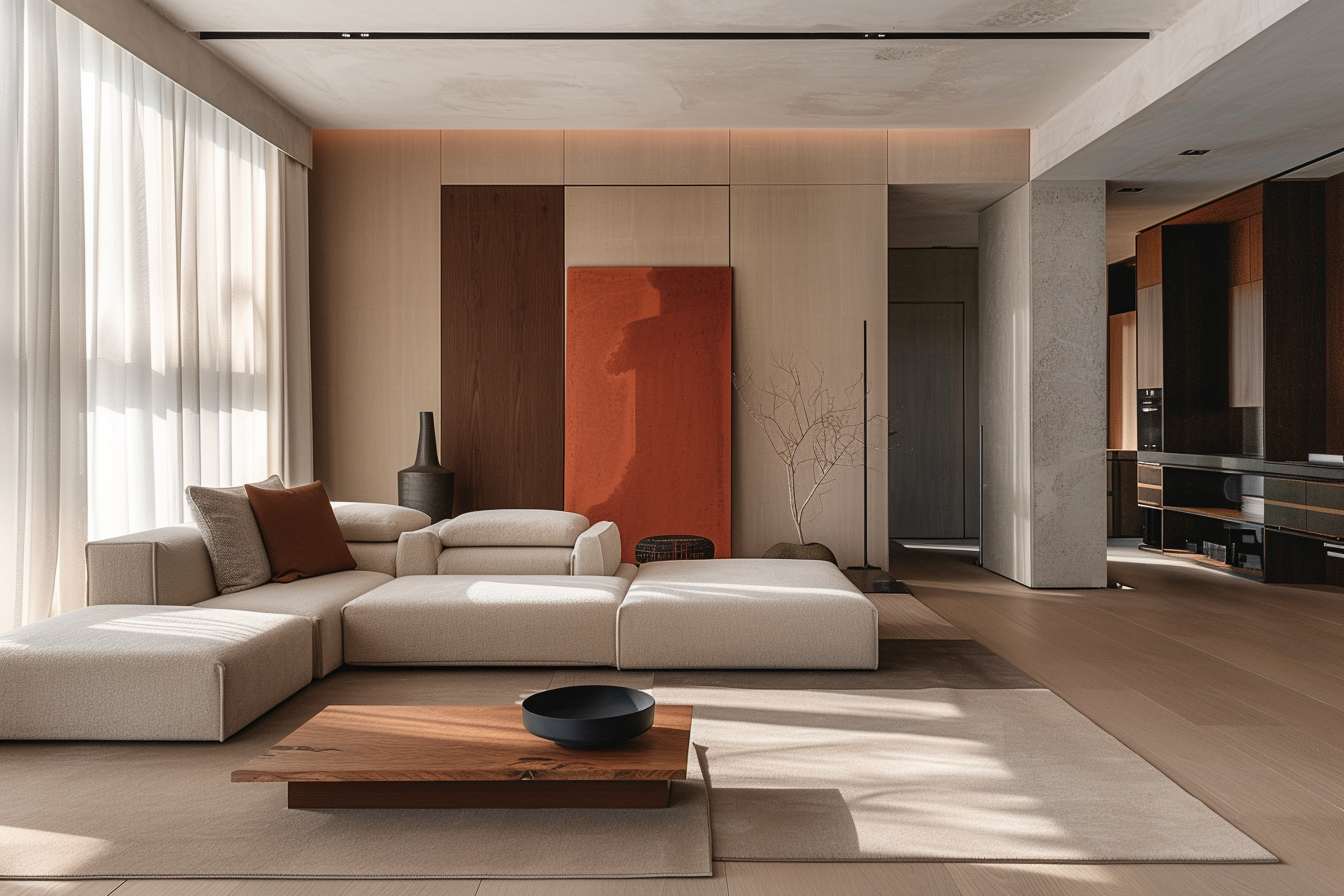Color Theory in Architectural Interiors

1. Introduction
Color is a powerful, multifaceted tool in architectural interiors, influencing not only how a space is perceived but also how it is experienced emotionally and psychologically. In design practice, color is never just an aesthetic choice; it is a strategic decision that can affect behavior, mood, functionality, and spatial perception. For recent architecture graduates entering the field, mastering color theory is essential. It bridges academic understanding of design with the practical knowledge needed to collaborate with clients, interior designers, and other consultants. This article provides a comprehensive overview of color theory in architectural interiors, highlighting its psychological effects, spatial manipulation capabilities, and application strategies across various project contexts.
2. Fundamentals of Color TheoryThe Color Wheel The color wheel is a foundational concept in color theory, comprising primary (red, yellow, blue), secondary (orange, green, violet), and tertiary colors. Understanding relationships like complementary, analogous, and triadic combinations enables designers to create balanced and intentional color schemes.
Pro Tip: Use a 60-30-10 rule when creating interior color palettes: 60% dominant color, 30% secondary color, 10% accent. This rule provides visual harmony and hierarchy.
Hue, Saturation, and Value (HSV)
- Hue refers to the pure color
- Saturation indicates the intensity of the color
- Value refers to the lightness or darkness
Adjusting these parameters can dramatically change a room's ambiance.
3. Psychological Effects of ColorWarm vs. Cool Colors
- Warm colors (red, orange, yellow): Stimulating and energetic. Often used in social or active zones.
- Cool colors (blue, green, violet): Calming and relaxing. Preferred in bedrooms, healthcare, and meditation spaces.
Color and Human Emotions
- Red: Stimulates appetite, increases energy (used in restaurants and gyms)
- Blue: Lowers heart rate, enhances concentration (used in offices, libraries)
- Green: Represents balance, linked to nature (used in wellness centers)
- Yellow: Bright and cheerful but can cause fatigue in large amounts
Pro Tip: In commercial projects, always consider cultural interpretations of color—e.g., red symbolizes luck in China but danger in Western contexts.
4. Color and Spatial Perception Color directly affects how users perceive spatial proportions:
- Light colors: Expand space, making small rooms feel larger
- Dark colors: Add depth, warmth, and can shrink oversized spaces for comfort
- Ceilings: Lighter colors make them feel higher; darker tones lower perceived height
5. Applying Color in Different Functions and TypologiesResidential Interiors
- Soft neutrals in living areas for flexibility
- Warm, stimulating tones in dining spaces
- Cool, subdued hues for restful bedrooms
Commercial Interiors
- Brand-aligned color schemes (e.g., tech offices use blues for trust and innovation)
- Vibrant accent walls in collaborative spaces
- Neutral tones in executive and formal zones
Institutional Interiors (e.g., schools, hospitals)
- Clear color coding for wayfinding
- Calming tones for patient rooms (pale green, soft blue)
- Stimulating yet balanced colors for classrooms (light yellow, green)
Pro Tip: Always test colors under real lighting conditions—natural light changes the appearance dramatically compared to artificial illumination.
6. Material Finishes and Color Interaction. Color doesn’t exist in isolation; it interacts with material textures and reflectivity:
- Matte finishes absorb light, creating subtle, muted tones
- Glossy surfaces reflect light, enhancing vibrancy
- Wood stains, metallic finishes, and textiles shift color impressions based on their texture and grain
7. Case Studies
Case Study 1: The Red Roof Community Center by TAMassociati (Kenya)
- Purpose: Provide community space and healthcare services
- Color Strategy: Red corrugated roof visible from afar symbolizes energy and urgency while creating identity
- Effectiveness: Red draws attention to the building's public role and supports its emergency health service branding
Case Study 2: Centre Pompidou, Paris (Renzo Piano + Richard Rogers)
- Purpose: Multifunctional cultural center
- Color Strategy: Primary colors used to code structural and functional systems (blue for air, yellow for electricity, green for water, red for movement)
- Effectiveness: Color becomes a legible architectural language for users and reflects the building’s transparency
Case Study 3: Maggie’s Centre, Leeds (Heatherwick Studio)
- Purpose: Cancer care support
- Color Strategy: Natural wood tones and soft greens enhance biophilic comfort and healing
- Effectiveness: Demonstrated psychological benefit through user feedback on emotional relief and ease
8. Conclusion Understanding and applying color theory in architectural interiors is more than a stylistic decision—it's a strategic tool for shaping experiences. From enhancing spatial qualities to influencing psychological responses, color plays a critical role in successful interior design. For recent graduates, embracing color theory early will improve communication with clients, strengthen conceptual design proposals, and provide clarity in collaborative design discussions. A well-considered color strategy enhances not only the aesthetics of a project but also its usability, identity, and emotional impact.
Pro Tip: When developing a concept, create a color storyboard that combines swatches, textures, and imagery. This helps align the mood across clients, collaborators, and execution stages.